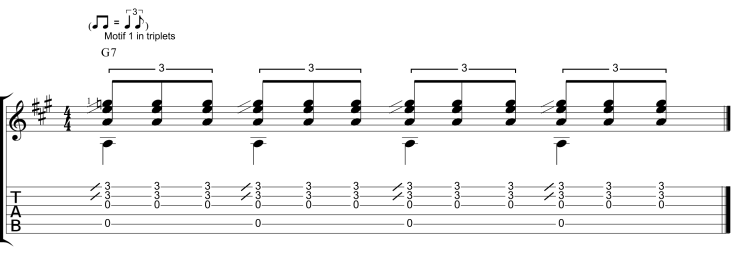Open Tunings For Blues & Rock Guitar (4)
John Lee Hooker Style
In this lesson you will learn some typical John Lee Hooker riffs and licks in Spanish tuning (Open A or Open G) that every Blues guitarist needs to know. John Lee Hooker was one of the true Blues giants and a real groove monster. These riffs are building blocks that can be played in many Blues songs. Like all typical open tunings riffs they are easy to play and sound great.
Classic John Lee Hooker Songs In Spanish Tuning
Here is a list of well known John Lee Hooker classics that were recorded in Spanish Tuning:
- Crawlin’ King Snake – John Lee Hooker (CD: Any ‘Best Of’-compilation)
- Boogie Chillen’ – John Lee Hooker (CD: Any ‘Best Of’-compilation)
- Sally Mae – John Lee Hooker (CD: Any ‘Best Of’-compilation)
With the riffs and licks from this lesson and the following one you will be able to play these songs quite authentic. John Lee Hooker recorded many songs in this style, especially in his early years.
Modal Playing – Staying On The I Chord
John Lee Hooker was not a man of many chord changes, especially in his earlier years. Like R L Burnside (you should check him out if you like John Lee Hooker) he would stay on the I chord and and just get a groove going. This is called modal playing, but I bet John Lee wasn’t interested in fancy terms like this. The most important part of his playing was the groove. That is true for most of the old Delta Blues guys, but especially for John Lee Hooker!
Let’s take a look at some typical John Lee Hooker grooves. Ex. 1 uses a Steady Bass in quarter notes played with the thumb and upstrokes with a shuffle feel played with the index finger. The two notes at the third fret are played with an index finger barre. Note the slides and listen to the audio to get the right feel. This may look simple, but it needs to be played with authority and drive.

Ex. 2 shows a typical variation: Playing the upstrokes in triplets. This is a variation you can apply to many of the shuffle licks you learn!

Ex. 3 is still played with that index finger barre, but the ring finger plays a hammer-on to the fifth fret. Try to play this without the hammer-on to see how much the hammer-on adds to simple riffs like this. Without the hammer-ons it’s just boring.

Ex. 4 shows a typical single note break. John Lee Hooker would often double his singing with a guitar line like this.

Try to add little things to make it more interesting. If you add an upward rake with the index finger and another root (both during the former rest) it could sound like this.
I show you the basic building blocks. With little things like this you can turn them into great Blues grooves.
These typical single note can also be played an octave higher:

If you play the fifth fret on the string below instead of the open string you could add a slide from below. This is also true for the version one octave lower (Ex. 4). Just check the names of the strings in Spanish tuning again to see where all those roots and fifth are…
Putting It All Together
Now try to start grooving and whatever happens, don’t stop the groove! It’s almost like meditation. This is not about fancy guitar playing. John Lee Hooker’s guitar style is all about groove. For variation break up the groove with a single note line (like the one shown above) every now and then, but keep it groovy even then. John Lee Hooker once said ‘I don’t play fancy guitar. The guitar I play is mean.’ A-how-how-how…
You’ll find many more examples like this in my new ebook ‘An Easy Guide To Open Tunings For Blues & Rock Guitar’ (available at my website). In the next article you’ll learn some more John Lee Hooker riffs in Spanish tuning. Stay tuned!
Lesson by Andi Saitenhieb. www.andisaitenhieb.de
“The artists you work with, and the quality of your work speaks for itself.”
Tommy Emmanuel
© Copyright Fundamental Changes Ltd 2025
No.6 The Pound, Ampney Crucis, England, GL7 5SA
